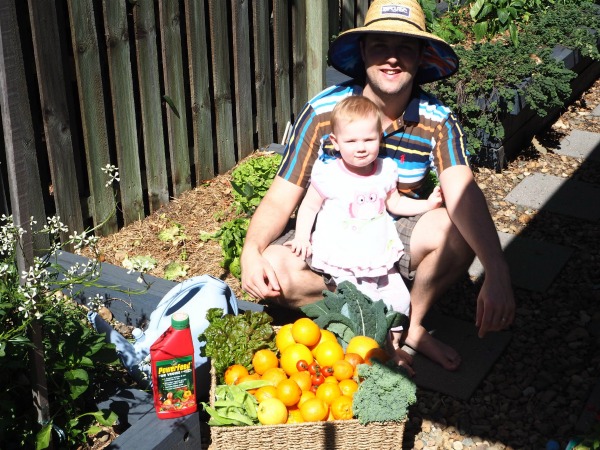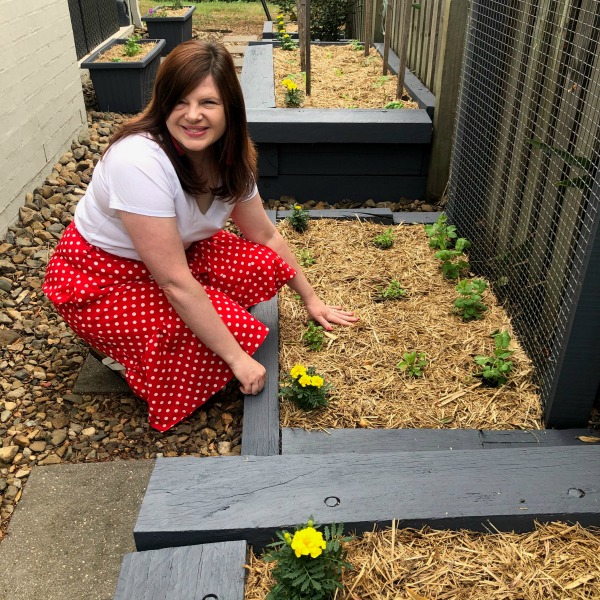There are many benefits to starting a home vegetable garden. The main advantage is the produce, which can help with family meals. But others include time spent outside, the nurturing impact on our physical and mental health and it’s a productive hobby which can give a sense of accomplishment.
We have had great success with our own home vegetable garden over the years, although we did let it lapse as it does require time to water and manage.
With many of us isolated at home, now is the perfect time to set up a home vegetable garden. Here are my 5 tips to getting set up so you can produce a successful harvest.
1. Choose the right location
When you set up your vegetable garden, choosing the right location will be key to its success.
The area will need good sunlight; be protected from wind and pests and not be in an area where it could flood.
You will need to set up your vegetable garden in an area which will get at least 6 hours of direct sunlight per day. The more sunlight your vegetables receive, the better the harvest.
When we first purchased our house, the kitchen side of our home received the better amount of sunlight. The location was also easy to protect from pests (our dog) and accessible from the kitchen.
Over the years though, our neighbours lilly pilly hedge has grown, keeping part of that side in the shade.
Consider all aspects of the location where you intend to grow your vegetables. Think about future impacts like trees and hedges which could block sunlight. Also think about the land slope and whether it’s prone to flooding during a heavy downpour.
2. Select the right vegetables
It’s important to plant vegetables in the right season. There are some vegetables which will grow all year round. We’ve had great success with tomatoes, lettuce, cucumbers and herbs like chives and mint.
But there are vegetables which will flourish in the winter months so research which ones they are. There is no point buying seeds to plant in the wrong season. They won’t grow and you will be disappointed with the outcome. You usually can’t buy seedlings out of season.
My preference is always to buy seedlings as I’ve had better success with these than seeds. But seeds are cheap.
By taking into consideration what our family eats, the space in our gardens and stock available, we have planted the following for our winter harvest.
- Tomatoes
- Lettuce
- Rocket
- Broccoli
- Snow Peas
- Silverbeet
- Spinach
- Watercress
- Basil
- Rosemary
- Parsley
- Thyme
- Mint
On the other side of our house, we have fruit.
- Orange Tree
- Lemonade Tree
- Mandarin Tree
- Avocado Tree
- Strawberry patch
We have spare space along the side of the house and we’re looking to plant potatoes, carrots, onions and some other root vegetables.
3. Use the right soil
You can manage the soil in a raised garden bed to ensure its right for your seedlings. But if you choose to plant in an existing garden, ensure you have soft soil as this allows for the roots to penetrate easily.
The type of soil you have in your yard will most likely determine if garden beds are a better alternative. I personally think this is the best option for most home yards. It’s also better on the knees and back.
Ensure your soil can drain well and is nourished with nutrients from compost. To get the right soil, look at the recommendations on the pack or ask your local garden center to deliver their recommendation.
4. Get the planting right
It’s important to space your planting right. Don’t bunch seeds or seedlings together. Remember they need space to grow. If they are planted too close together they will compete for water, sunlight and other nutrients.
Companion planting is definitely a term to research when you plant your seedlings. The method behind companion planting is the two plants will offer benefits to each other so they can successfully grow. For example, one will attract the bees, while the other may repel pests.
There is limited information on companion planting with vegetables and there is skepticism on its success. It’s worked well for us over the years.
Some common companion planting combinations are
- Tomatoes and Basil
- Broccoli and Mint
- Lettuce and Carrot
- Spinach and Peas
It’s also good to know which plants don’t like to be planted near each other.
Once planted, cover the soil with mulch. This helps keep the nutrients and water in the soil.
5. Water regularly
You don’t want to over water or under water your vegetable garden. Monitor the growth regularly and water every second day. During hot days, watering everyday will be needed.
Every fortnight, use a seaweed solution like Seasol to add nutrients for the vegetables to grow. This helps increase the yield and quality of the vegetables.

The main reasons why many home vegetable gardens fail is due to lack of time and attention. You’ve got to be committed to maintaining the garden to get the rewards.

Involve the kids in maintaining the garden as it gives them an understanding of where their food comes from. It also gets them outside and their motivation may keep you accountable to maintaining it.












